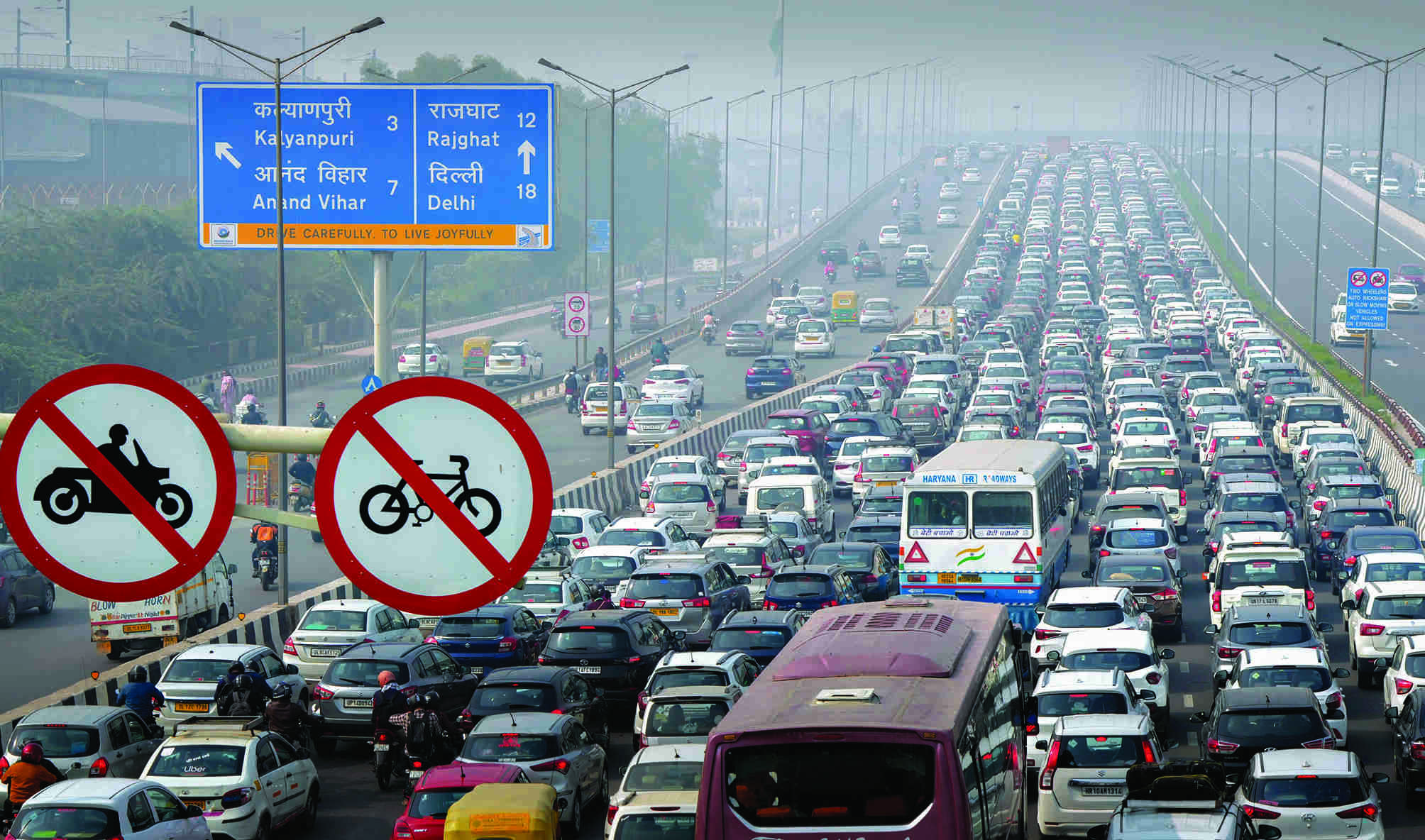AQI improves marginally

New Delhi: Delhi's air quality improved marginally on Wednesday owing to relatively better meteorological conditions, with the Commission for Air Quality Management saying there is no immediate need to implement curbs, such as a ban on the entry of trucks and a closure of educational institutions, under the fourth stage of the Graded Response Action Plan.
SAFAR, a forecasting agency under the Union Ministry of Earth Sciences, said the share of stubble burning in Delhi's PM2.5 pollution increased to 32 per cent due to favourable transport-level wind speed.
Transport-level winds blow in the lowest two layers of the atmosphere — the troposphere and stratosphere — and carry smoke from farm fires to the national capital region.
Moderately favourable surface-level wind speed (up to 8 kmph), however, did not allow rapid accumulation of pollutants, meteorology experts said.
The 24-hour Air Quality Index (AQI) of the city stood at 376, improving from 424 on Tuesday, which was the worst since December 26 last year when it was 459.
The air quality is likely to slip back into the severe zone on Thursday and Friday due to the impact of stubble burning. However, the situation
is predicted to improve on Saturday on the back of strong surface-level wind speed, forecasters said.
The slight improvement in the air quality on Wednesday was evident from the better visibility levels (1,500 metres) at the Palam and Safdarjung airports in the morning.
However, the monitoring stations at Anand Vihar (422), Bawana (431), Wazirpur (418), Narela (406), Vivek Vihar (405), Patparganj (410), Jahangirpuri (422), Sonia Vihar (417), Nehru Nagar (406) and Ashok Vihar (406) continued to report the air quality in the "severe" category.
An AQI of above 400 is considered "severe" and can affect healthy people and seriously impact those with existing illnesses.
According to the Energy Policy Institute at the University of Chicago's (EPIC) Air Quality Life Index (AQLI) released in June, the residents of Delhi stand to lose 10 years of life expectancy due to poor air quality. With the pollution levels worsening, the CAQM had, on Saturday, directed authorities to impose a ban on construction and demolition activities in Delhi-NCR, barring essential projects, and other curbs under the third stage of the GRAP.
First implemented in 2017, the GRAP is a set of anti-air pollution measures followed in the capital and its vicinity according to the severity of the situation.
It classifies the air quality in the Delhi-NCR under four different stages: stage 1 - "poor" (AQI 201-300), stage 2 - "very poor" (AQI 301-400), stage 3 - "severe" (AQI 401-450) and stage 4 - "severe plus" (AQI above 450). This year, curbs on polluting activities are being imposed three days in advance, based on forecasts.
Earlier, the authorities would implement the measures only after the PM2.5 and PM10 concentration touched a particular threshold.
The next stage in the "severe plus" category, or the fourth stage, can include steps such as a ban on the entry of trucks into Delhi, allowing 50 per cent of the staff in public, municipal and private offices to work from home, a closure of educational institutions and the plying of vehicles on an odd-even basis.
However, a CAQM official said that there is no immediate need for implementing the curbs under the fourth stage as forecasts suggest an improvement in the air quality in the coming days.
The official said the sharp increase in the AQI over the last five days has "more to do with meteorological and external factors".



